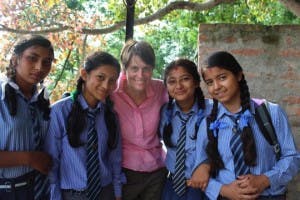Western professor Rebekah Paci-Green has returned from Nepal with stories, studies and a message for governmental officials.
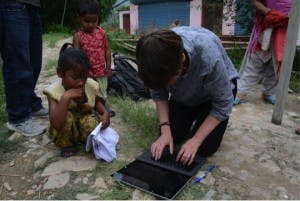
In the middle of April 2015, she and Bishnu Pandey from humanitarian group “Risk RED” had just finished an intensive project—creating an colorful information packet titled “Toward Safer School Construction: a community-based approach.”
It described the risk children in the U.S and across the world face as they sit in classrooms, some learning in schools that will collapse in earthquakes or prove dangerous in natural disasters.
As a solution, Paci-Green and others presented the benefits of community-based school construction, meaning communities are directly involved in decisions and the design of schoolhouse buildings.
Just 10 days after they finished the guide, the massive earthquake hit Nepal. In the week that followed, the death toll grew into the thousands each day.
The 7.8 earthquake had several large aftershocks, one of which was 7.3. An avalanche was triggered on Mount Everest; China and India were also impacted.
It killed more than 8,000 people and injured over 18,000. Nearly 400 people were missing and over 500,000 houses destroyed
Schoolhouses collapsed as well, but the earthquake happened on a Saturday—the single day Nepalese children do not attend school.
So many more children and teachers would have died if it had hit during the school week, according to Paci-Green.
Pandey, who was born and raised in a small village in Nepal, was calling from Canada to reach his friends and family—to check if they were safe.
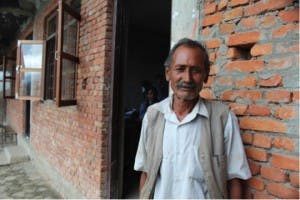
Paci-Green and Pandey knew they were going to go to Nepal as soon as the school quarter was over in June. One week after school ended—when Paci-Green had graded finals and they had prepared for the trip, they left the U.S as a team, along with Rob Friedman.
Their assignment was to document and do damage assessments. They were to interview people using the questionnaires prepared in the months after the earthquake and to document which schools had survived the earthquake—and why.
Upon arriving in Nepal, Paci-Green experienced a mix of familiar and unfamiliar situations.
She’d visited disaster-stricken areas before. She went to New Orleans after Hurricane Katrina, and also worked on risk-reduction projects.
At Western, she teaches courses in the Disaster Risk Reduction minor.
People had lost their livelihoods—grains, livestock, possessions, and members of their friends and family, but they were still incredibly receptive, Paci-Green said.
“It’s inappropriate to visit before a month,” she said. People are doing the immediate rebuilding, restoring, mourning and cleanup.
But when they visited, she said, people were willing to be interviewed and to open up about their experiences. It helped to have the world see what had occurred—to have someone say, “yes, this happened, I’m so sorry that this happened,” and for it not to go unacknowledged, Paci-Green said.
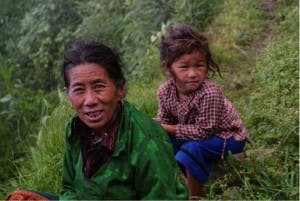
Having training to deal with the stress and grief of others keeps the team from becoming part of the problem, she said.
Something that took her by surprise was the dust.
“The dust was everywhere,” Paci-Green said. The rain mixes with the dirt to create mud, which dries on the streets and then spreads when it’s hot and sunny.
People go out in surgical masks in order to avoid breathing it in, she said.
Paci-Green also was surprised at the difficulty it took to obtain a SIM card for her phone—you must be fingerprinted and show your passport, she said.
“In a dungeon somewhere, they must have the fingerprints of everyone with a phone in Nepal,” she said.
A typical day, Paci-Green said, began with a huge breakfast in the early morning. The team typically ate twice a day, as they were too busy to stop for lunch.
They would drive an hour or more on rough roads, then hike to schools often located in the mountains. The team of four or five members would interview people, with Pandey speaking to the locals and translating, and Paci-Green recording and transcribing pages of notes.
The team would measure the school building’s damage, and school leaders would point to piles of rubble or show them the cracks in the walls. They’d go find the masons who built the schools, or interview them if they were already at the site.
At focus groups, the team would talk with parents and community members about how the school was built, recording what the locals knew about its construction methods and what their typical response to an earthquake in progress would be.
“Their plan was to run out of the buildings,” said Paci-Green of some surviving schools that were reinforced without community training.
“When school children run out of school buildings, people die and people are trampled,” she said. “You can’t have children actually running out of a school building in an earthquake and expect things to go well.”
“We asked them, you have this retrofitted school, what would you have done? The government or a funding agencies spent whole lot of money making sure they were safe. And they said, ‘yeah, we didn’t understand anything they were doing—we thought it was just a bunch of corruption. We were going to tell the kids to run.’”
They would visit 20 or so houses closest to the school, and ask the residents questions, including what the school originally looked like.
She and her team took photos and notes until 5 or 6 p.m. and then returned to their tent or house, depending on the location.
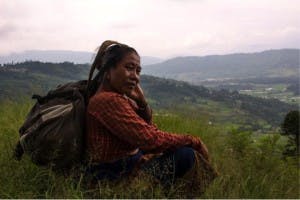
They’d then spend several hours writing, summarizing, working on the questionnaires, and producing five-to-ten pages per site.
Paci-Green said they would repeat this for three days and then take a day off to prevent burnout.
Paci-Green returned to the U.S in late July with the results from the trip. For the next three weeks, she locked herself in her office and worked on producing a report.
“Bishnu stayed in Nepal, so that the minute I had finished writing, we could do a big meeting with the Ministry of Education and the development partners," she said.
At the meeting, many groups attended, including the World Bank, the Asian Development Bank, UNICEF, U.N. agencies, and various humanitarian organizations such as Red Cross and Save the Children
The Assessment and Results
Over the last few decades, Paci-Green said there have been various efforts in Nepal to strengthen buildings, houses and schools in the event of an earthquake. They’d discovered some of these approaches worked, and some were dismally ineffective.
The selected locations were 12 public schools, in sets of three, across four districts affected by the earthquake.
Four school areas were “controls,” with no intervention from outside groups. Four were retrofitted schools, but had no community engagement. And the last group of four schools had both community engagement and reinforced schools.
Of the group that had both approaches, “everything was beautiful. No collapses, no damage. Grade A-plus,” Paci-Green said.
Of the group that had construction done but no community training, half its buildings did well and the other half had heavy damage or collapses. “But was only after the earthquake they believed the retrofits worked,” Paci-Green said, leaving the buildings useless if teachers and students exit it during the earthquake.
The final group, with no intervention, had a significant amount of moderate to heavy damage.
“Community engagement is key,” Paci-Green said. “Training is key, because things go wrong. It’s construction, things go wrong all the time.”
“If you train the local masons, then after the project is over, two years later, there’s still someone in the community who can say ‘this is how we should be building.’”
Paci-Green wants people to not fall into stereotypical traps when thinking of Nepal. She doesn’t want people to say ‘oh, those poor people” or see Nepal as “monolithic.”
“They’re so rich,” she said. “There’s so much culture in Nepal. The languages, the people and the vibrancy of Nepal left an impression on her.
“There’s a couple people who will be in my mind forever,” Paci-Green said.
“A woman who laughed at me as we walked up a very steep hill to get to our school,” she said.
The woman showed them a quicker way to get to the school they needed to visit. “She didn’t think foreigners could really handle such a steep path. We had to climb hand over foot, but it was indeed the fastest way up.”
Friedman took her picture as they caught up to her. “She had been waiting for us and laughed at our windedness,” Paci-Green said.
“She was carrying a ton of weight—she’d just been selling illegal hooch that they make from local corn and millet. She will stick in my mind for a long time.”
“And there’s a mason at another school who, after learning about the retrofits, refused to do any work in the community unless they would allow him to build it right,” she said. “He became this incredible point; a finger in the dike, who said ‘we’re going to make this community safe.’ He convinced the homeowners to build safely. Not completely, but to do the little changes to the construction that really made a big difference. He was so proud and so clear-sighted in why it was important and what his role was. He was being told by homeowners ‘no, I don’t want to spend the extra money, just do it the old way.’ He had the integrity to say no. You don’t find that among contractors all the often, so he will stick in my mind a long time,” she said.
“And there’s a classroom of eighth-graders who wouldn’t let Bishnu leave the school. The bell had sounded and they were all free to go home. They said ‘no, we want to know why the buildings fell down, we want to know how to build our houses better.’ And they’re eighth-graders. So he gave them a short lecture—just some ideas to think about. They said ‘oh, no, keep talking,'” she said.
“And there’s some parents at a school that was retrofitted. It was done without community engagement and without oversight, and it collapsed.”
They felt betrayal at these international organizations coming in and telling them what to do. There’s a couple that even said ‘you’re treating us like an experiment, and we don’t want to be your experiment.’ That will stick for a long time. That will drive me, in fact. They deserve not to be someone’s mess,” she said.
There were some success stories that Paci-Green witnessed in addition to destruction.
“Two different principals in different sites who oversaw retrofitting projects said it was the crowning achievement of their careers—that they felt most proud of overseeing the retrofit of their schools and that their communities’ children were now going to be safe.
“And in many, many school sites, people said during the reconstruction ‘we need to be building these schools better. These schools need to be sites where we can all learn to build safely.’ They very clearly wanted us to tell the governments and development agencies that they wanted safe schools—but they also wanted to know how to build safely. They wanted to learn,” Paci-Green said.
She was surprised at how modified schools often were, by communities and school leaders. “When you get an engineering design, you’re not really supposed to touch it; you build it that way—that’s the point. The architect has laid it out; nobody messes with the design.
In Nepal, they look at the design and say ‘hmm, maybe I’ll shave this down. Two story? Ah, let’s make this a three-story building. This classroom seems like it will be small; let’s take out a wall."
"The grand scheme is to get Bishnu appointed to the Ministry of Education and be a liaison for school safety,” Paci-Green said.
If officials do not respond to efforts to build schools in Nepal safely, the group is not above public shaming, said Paci-Green.
“We don’t want to go there, but we will if we have to,” she said.
